Search Thermo Fisher Scientific
Invitrogen
Granzyme B Monoclonal Antibody (16G6), Biotin, eBioscience™
FIGURE: 1 / 7
Granzyme B Antibody (13-8822-82) in WB
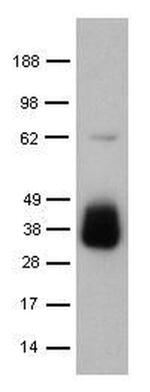
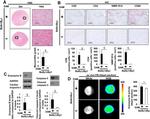
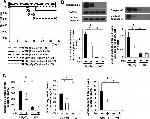
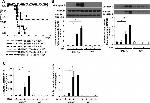

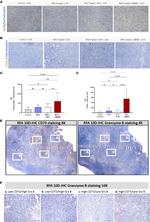
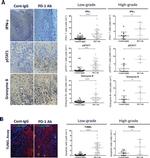
Product Details
13-8822-82
Species Reactivity
Published species
Host/Isotype
Recommended Isotype Control
Class
Type
Clone
Conjugate
Form
Concentration
Purification
Storage buffer
Contains
Storage conditions
Shipping conditions
RRID
Product Specific Information
Description: The 16G6 antibody reacts with mouse Granzyme B (GrB) which is a member of the granzyme serine protease family. GrB is found in the granules of cytotoxic T cells and NK cells. Granzyme B has also been described as CGL1 (cathepsin G-like-1), a serine protease expressed only in cytotoxic T-lymphocytes after cell activation. GrB has been called CTLA-1 (cytotoxic T lymphocyte-associated serine esterase 1) based on identification of mRNA in various cytotoxic T cells, but not observed in non-cytotoxic lymphoid cells. GrB is crucial for the rapid induction of target cell death by apoptosis, induced by interaction with cytotoxic T cells. The receptor involved has been identified as mannose 6-phosphate receptor. This receptor functions as a death receptor for granzyme B during cytotoxic T cell-induced apoptosis.
For intracellular staining and flow cytometric analysis with direct conjugates of anti-mouse Granzyme B, it is highly recommended to use the Foxp3 Staining Buffer Set (Product # 00-5523). Other buffers may yield varying results.
Applications Reported: This 16G6 antibody has been reported for use in intracellular staining followed by flow cytometric analysis, western blotting, and immunohistochemical staining of formalin-fixed paraffin embedded tissue sections.
Applications Tested: The biotinylated 16G6 antibody has been tested by immunoblotting (WB); a recommended starting concentration is 1 µg/mL. It is recommended that the antibody be carefully titrated for optimal performance in the assay of interest.
Filtration: 0.2 µm post-manufacturing filtered.
Target Information
Granzyme B is a member of the granzyme serine protease family, and is found in the granules of cytotoxic T cells and NK cells. Granzyme B has been described as CGL1 (cathepsin G-like-1), a serine protease expressed only in cytotoxic T-lymphocytes after cell activation, and CTLA-1 (cytotoxic T lymphocyte-associated serine esterase 1) based on identification of mRNA in various cytotoxic T cells, but not observed in non-cytotoxic lymphoid cells. Granzyme B is crucial for the rapid induction of target cell death by apoptosis, induced by interaction with cytotoxic T cells. The receptor involved in this process has been identified as mannose 6-phosphate receptor which functions as a death receptor for Granzyme B during cytotoxic T cell-induced apoptosis. Granzyme B enters target cells to cleave caspase-3 and initiate the caspase cascade leading to DNA fragmentation and apoptosis. Granzyme B can also act through a mitochondrial apoptosis pathway by cleaving the Bid protein. Granzymes are neutral serine proteases, which are stored in specialized lytic granules of cytotoxic T lymphocytes (CTLs) and in natural killer (NK) cells. A number of granzymes (A to G) have been isolated and cloned from mouse CTLs and NK cells, however in man, fewer have been cloned and identified.
For Research Use Only. Not for use in diagnostic procedures. Not for resale without express authorization.
Bioinformatics
Protein Aliases: CCP1; CTLA-1; Cytotoxic cell protease 1; Cytotoxic T lymphocyte associated serine esterase 1; Fragmentin-2; Granzyme B(G,H); GranzymeB; Human lymphocyte protein (Hlp); OTTHUMP00000028189
Gene Aliases: AI553453; CCP-1/C11; CCP1; Ctla-1; Ctla1; GZB; Gzmb
UniProt ID: (Mouse) P04187
Entrez Gene ID: (Mouse) 14939

Performance Guarantee
If an Invitrogen™ antibody doesn't perform as described on our website or datasheet,we'll replace the product at no cost to you, or provide you with a credit for a future purchase.*
Learn more
We're here to help
Get expert recommendations for common problems or connect directly with an on staff expert for technical assistance related to applications, equipment and general product use.
Contact tech support
